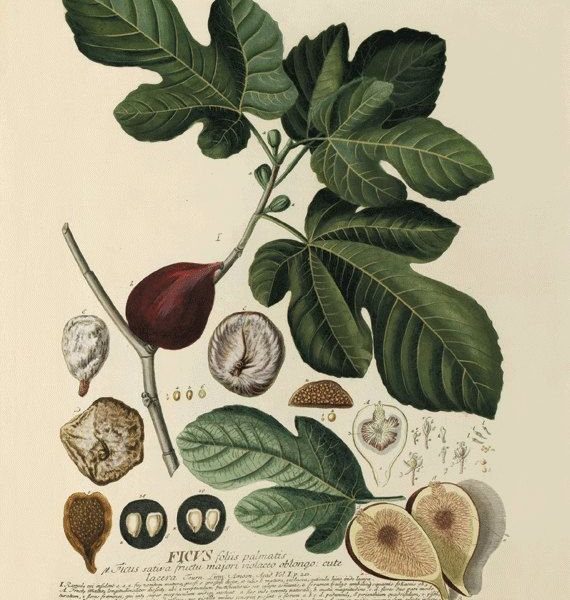Figs represent abundance and fertility. In various cultures, the fig tree and its fruit are laden with symbolism. The ancient Greeks associated figs with prosperity and peace. Additionally, figs hold spiritual significance in many religions. What do figs represent to you? Let’s delve deeper into the rich cultural meanings tied to this beloved fruit.
What Do Figs Represent: Exploring the Symbolism of Figs
Have you ever bitten into a soft, sweet fig and wondered if there’s more to this delicious fruit than meets the eye? Figs have been a significant symbol in various cultures and religions for centuries, with rich meanings and associations attached to them. In this blog post, we will delve into the fascinating world of fig symbolism and uncover the hidden meanings behind this extraordinary fruit.
The History of Figs
Before we dig into what figs represent, let’s first explore the history of this unique fruit. Figs have been cultivated for thousands of years and have deep roots in ancient civilizations such as the Egyptians, Greeks, and Romans. They were highly prized for their taste, nutritional value, and medicinal properties.
A fascinating fact about figs is that they don’t actually contain flowers on the outside; instead, they bloom inside the fruit itself. This distinctive characteristic has contributed to the fig’s symbolism in various cultures, representing hidden beauty and secrets waiting to be discovered.
The Symbolism of Figs in Different Cultures
Ancient Egypt
In ancient Egypt, the fig tree was considered a sacred plant associated with fertility and prosperity. The fig fruit was often used in rituals and offerings to the gods, symbolizing abundance and the cycle of life. Figs were also believed to have healing properties and were used in traditional medicine.
Greek Mythology
According to Greek mythology, the fig tree was linked to Dionysus, the god of wine and fertility. The fig tree was revered for its symbolic connection to abundance, growth, and transformation. Figs were considered a divine fruit, representing the sweetness of life and the rewards of hard work.
Roman Culture
In ancient Rome, the fig tree symbolized peace and prosperity. Romans believed that figs brought good luck and protection from harm. Figs were often exchanged as gifts to express friendship and goodwill. The Roman poet Ovid even mentioned figs in his works, highlighting their significance in Roman culture.
Religious Symbolism of Figs
Christianity
In Christian tradition, figs are mentioned several times in the Bible, often symbolizing abundance, prosperity, and spiritual awakening. The story of Adam and Eve in the Garden of Eden, where they used fig leaves to cover themselves, is a well-known biblical reference to the fig tree.
Jesus also used the fig tree as a metaphor in his teachings, emphasizing the importance of bearing good fruits. The fig tree became a symbol of faith, righteousness, and the productivity of one’s actions in Christian symbolism.
Islam
In Islamic culture, figs are considered a blessed fruit with numerous health benefits. Figs are mentioned in the Quran as one of the fruits of paradise, symbolizing purity, nourishment, and blessings from Allah. Muslims often consume figs during Ramadan, the holy month of fasting, as a symbol of sustenance and spiritual nourishment.
The Fig Tree in Literature and Art
Throughout history, figs and fig trees have inspired artists, writers, and poets with their symbolic significance. In literature, the fig tree is often used as a metaphor for growth, transformation, and the passage of time. Writers like Sylvia Plath and Virginia Woolf have referenced the fig tree in their works to convey complex emotions and existential themes.
In art, the fig tree has been depicted in various forms, symbolizing life, abundance, and the interconnectedness of all living beings. Artists like Vincent van Gogh and Paul Cézanne have captured the beauty of fig trees in their paintings, infusing them with layers of meaning and emotion.
Conclusion: Unveiling the Mysteries of Fig Symbolism
As we conclude our journey into the world of fig symbolism, we have discovered the rich tapestry of meanings and associations that have been woven around this extraordinary fruit. From ancient cultures to religious traditions, figs have served as potent symbols of fertility, prosperity, transformation, and spiritual awakening.
Next time you bite into a juicy fig, remember that this humble fruit carries within it centuries of history and symbolism, waiting to be explored and savored. The next time you see a fig tree laden with ripe fruit, take a moment to appreciate the hidden beauty and profound meanings that lie beneath its branches.
May the symbolism of figs inspire you to embrace abundance, growth, and the sweetness of life in all its richness and complexity.
FIG | How Does it Grow?
Frequently Asked Questions
What symbolism do figs hold?
Figs symbolize abundance, fertility, and sweetness. In many cultures and religions, figs are considered a sign of prosperity and blessings.
How are figs often interpreted in literature and art?
In literature and art, figs are commonly used to represent knowledge, enlightenment, and hidden truths. They can symbolize the unveiling of secrets or the discovery of wisdom.
Do figs have any significance in spiritual beliefs?
Yes, figs are often linked to spiritual beliefs and practices. They are seen as a sacred fruit in various traditions, representing spiritual growth, nourishment, and the connection between the physical and spiritual realms.
Final Thoughts
In conclusion, figs represent abundance, fertility, and sweetness. Throughout history and different cultures, figs have been seen as a symbol of prosperity and growth. Their unique taste and nourishing qualities make them a cherished fruit with deep symbolism. Whether in mythology, religious texts, or everyday life, figs hold a special significance that goes beyond their delicious flavor. The next time you enjoy a fig, consider the rich meaning and symbolism that this fruit carries.




